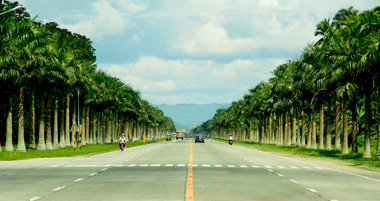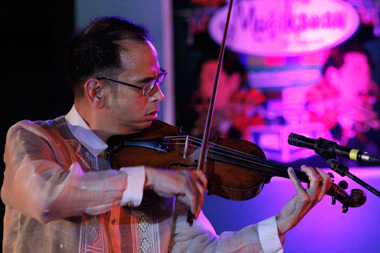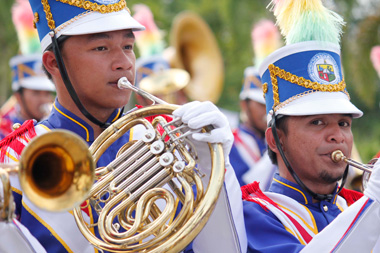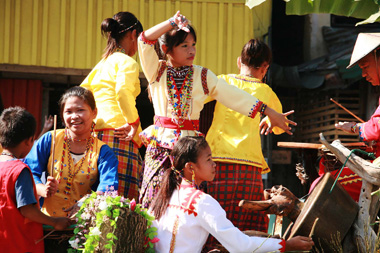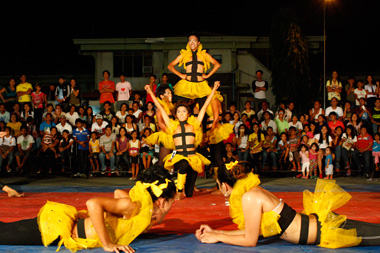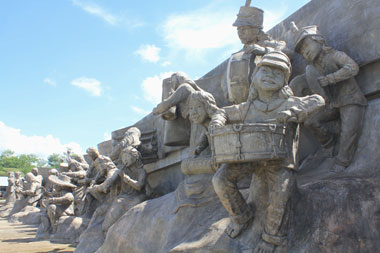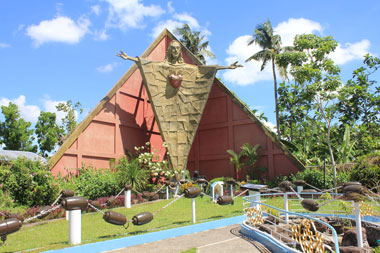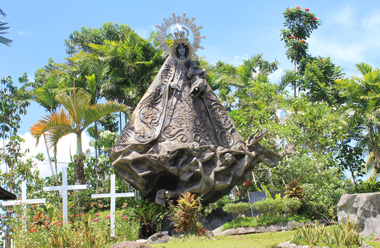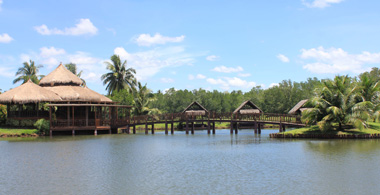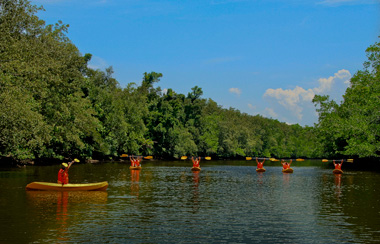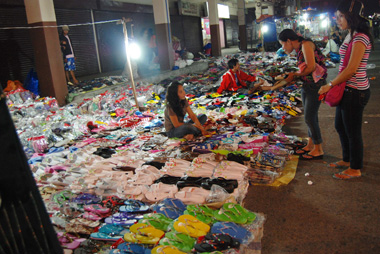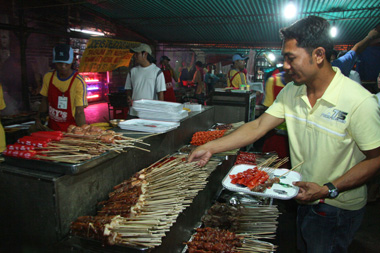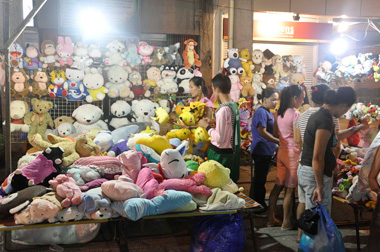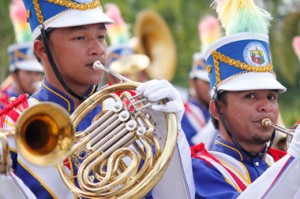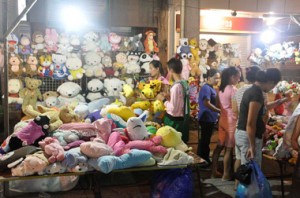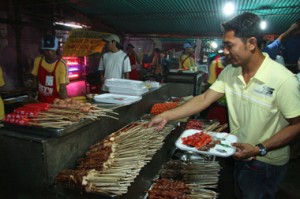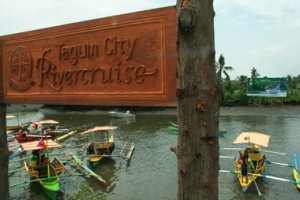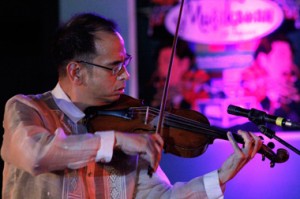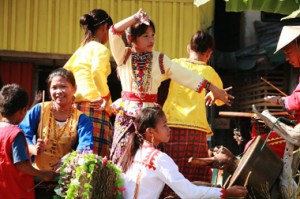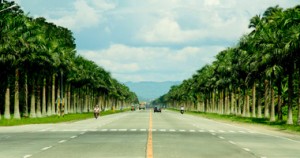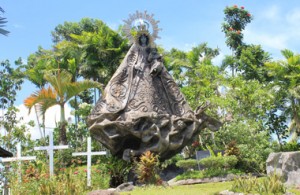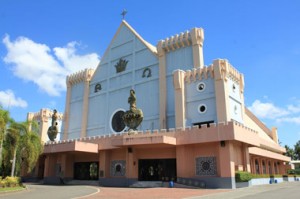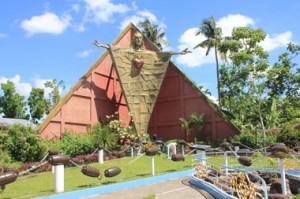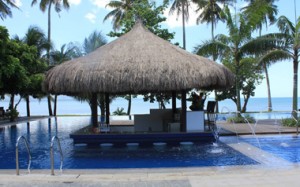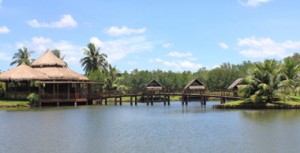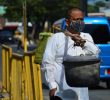From a rustic town to a progressive metropolis in the province of Davao del Norte, the city has a lot to offer from its colorful festivals, vibrant multi-cultural events and man-made tourist spots aiming to be the premiere tourist destination in the North, next to Davao City.
By MART D. SAMBALUD
Davao Today
TAGUM CITY, Philippines – While the rest of the travelers packed up their bags and travel to renowned beach resorts-cum-summer destinations, others have chosen to travel some local scenic spots to be isolated from the noise of the metropolis where the usual booze and end-of-the-year parties happen.
Just an hour and thirty minutes away from Davao City, an itch for unplanned trip or a weekend getaway is likely ideal for travelers who want to have a cheap day-tour, a classy and luxurious beach escapade, a trek along the lush green man-made forest or even a cruise along the cool and gentle rivers.
All these and more are Tagum City’s hidden attractions that are to be discovered by local and foreign tourists alike. The city offers a mix of fun, relaxing, fascinating and less expensive eco-adventure trips from upland to coastal shores.
From a rustic town to a progressive metropolis in the province of Davao del Norte, the city has a lot to offer from its colorful festivals, vibrant multi-cultural events, and man-made tourist spots aiming to be the premiere tourist destination in the North, next to Davao City.
The next tourist capital
Tagum City, the capital city of Davao del Norte province is strategically located at the Northern portion of Southern Mindanao. It serves as a vital economic crossroads for the entire Davao Region.
Beyond the notion of being a predominantly agricultural metropolis, this progressive city is becoming a competitive metropolis that is able to promote its local tourist spots to audience from the global stage.
“Tagum City continues to improve its local tourism industry to achieve its ambition to be the next tourism capital in Southern Mindanao,” said Edwin Lacquiste, City Information Officer II.
He added that “to achieve such ambition, we must boost our local economy and improve the city’s infrastructure, trade and commerce to gain investors as we protect and conserve the city’s natural attractions.”
Known for hosting various national and international affairs, Tagum City is not farfetched to be the next must-be-visited destination in Southern Mindanao. With its accessibility, fair weather, plain topography and stable economy, tourists can actually pamper themselves and enjoy Tagum City’s comfortable and serene lifestyle where people and nature coexist harmoniously.
Palm City Capital of the Philippines
Unknown to many, Tagum City has been crowned as the country’s Palm City Capital. One can easily notice the beautifully grown palm trees planted beside the Maharlika Highway leading to the major entrance and exit access roads of the city. These palm trees were part of the local government’s sustainable pro-environment project.
Tagumeños are known to have an eclectic love and passion for music. That’s why the the most-awaited event every year that is celebrated every February is locally known as “Musikahan sa Tagum Festival. This one-of-a-kind cultural festival convenes local and international composers, performers, music enthusiasts and singers to celebrate and perform various music genres.
Tagum lives to its title as the “City of Festivals” with its annual 15 festivals. This array of festivals showcases the world-class skills and talents of Tagumeños in culture, sports, entertainment, arts and music. From festivals, eco-adventure to urban challenges, Tagum has also pro-earth advocacy programs which include Earth Day, Ocean and Environment months that respond to the call of protecting the environment.
Tagumeños also thank the Magbabaya for the bountiful harvest led by the four dominant tribes: Mansaka, Mandaya, Kalagan and Dibabawon. These tribes gather to perform the century-old tribal rituals, songs and dances.
The city also recognizes the role of gay community with its unique festival dubbed as Binuhat showcasing the LGBT’s (lesbian, gays, bisexuals,transgender) skills and talents.
One of the main attractions is Tagum’s PHP 700 Million-worth of newly constructed state-of-the-art City Hall that sits on the vast green fields of Apokon village. The structure attracts visitors not just for its colossal structure but also for its “green” (read: environment-friendly) design and technology.
Home of the biggest Cathedral, largest rosary
Crowned to have the biggest Cathedral in the island of Mindanao and world’s largest wooden rosary, gigantic structures sit in Magugpo South along corner Gonzales Avenue and Sobrecary Street, away from the city’s hustle and bustle. The giant 150-meter long wooden rosary made from magcono (iron wood) is touted to be the world’s largest rosary, with each bead weighing 35 Kilograms.
The rosary lies beneath the bronze statue of the Risen Christ and behind the Cathedral.
It took 12 years to construct the Christ the King Cathedral located in a two-hectare parcel of land donated through the generosity of the heirs of late Dr. and Mrs. Juan Gonzales. This place of worship is a collective expression of gratitude by the faithful of the Diocese of Tagum to Christ The King of The Universe, titular head of the Roman Catholic Church.

Tagum’s Regina Rosarii Grotto
Nestled in a lush green hill is a 30-feet bronze statue of “Birhen ng La Naval” known to Tagumeños as the Regina Rosarii grotto. It is located in Magdum village, secluded from the noise and the city’s chasing pavements.
This Marian Hill is known to host various retreat services managed by the Dominican Sisters of the Most Holy Rosary of the Philippines. One can enjoy the grand scenery of the hill adorn with well-manicured trees towering in rows.
Communing with the serene, pristine blue waters of Davao Gulf is a perfect getaway to escape momentarily the blasting noise of the city and have a sporadic view of the coastal shores of Tagum’s Hijo Estate Resorts — the Banana Beach Resort in Madaum village.
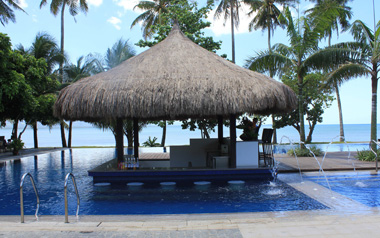
A 25-minute ride from the city proper will lead you to the world’s only beach resort inside a banana plantation. Banana Beach Resort offers a world class accommodation and services for those who spend the luxurious beach trip. Boasting its world class “infinity” swimming pool and a sprawling, vibrant green forest, this resort promises to offer “lanikai” — a Hawaiian word which means “heaven by the sea” experience.
Nestled within the 760-hectare banana plantation developed into an estate resort, Hijo Real Estate Resort brags itself to be the premiere eco-tourism site of Tagum City. Aside from the usual beach estate amenities, it offers a different kind of tourism experience rolled into one.
A 200-meter canopy walk within its man-made 60-hectare forest covered in rich foliage of anahaw leaves and a river cruise traversing Madaum River where tourists can see the towering mangrove trees along the river banks.
Banana Beach Resort is managed by Tuazons of the Hijo Resources Corporations. It has also fishing spots, the Lanikai Heritage house and accommodation ranging from air-conditioned rooms to open air-huts along the beach side.
River cruise: Tagumeños style
The river banks of Tancuan in Bincungan village, and the calm waters of Nabintad River are home to century-old towering mangrove trees. Once obscure to the public eye, these once elusive rivers are now a protected area declared by Tagum City’s Tourism Office to safeguard the mangrove trees while caring the city’s wetland areas.
A two-hour cruise spanning the 8.8-Kilometer river will delight your eyes of the varieties of mangrove trees growing besides the river banks; meeting with the fisher folks of a Muslim community in Liboganon village where tourists can actually buy Muslim-made handicrafts and taste native delicacies that reflect the community’s unique palette of culture.
Finally, a quick city day tour is not complete without experiencing one of Tagum’s attractions, the Night Market, located along the intersection roads of Tagum Cultural and Trade Center.
Commonly referred to as “duko-duko,” this bustling night market attracts visitors who want to dine and taste the palatable grilled barbeques in one of the lined barbeque stalls. After a sumptuous dinner, one can actually join the crowd to buy ukay-ukay or cheap used clothings or perhaps designer-labeled bags. (Mart D. Sambalud/davaotoday.com)
davao del norte, tagum, tourism

